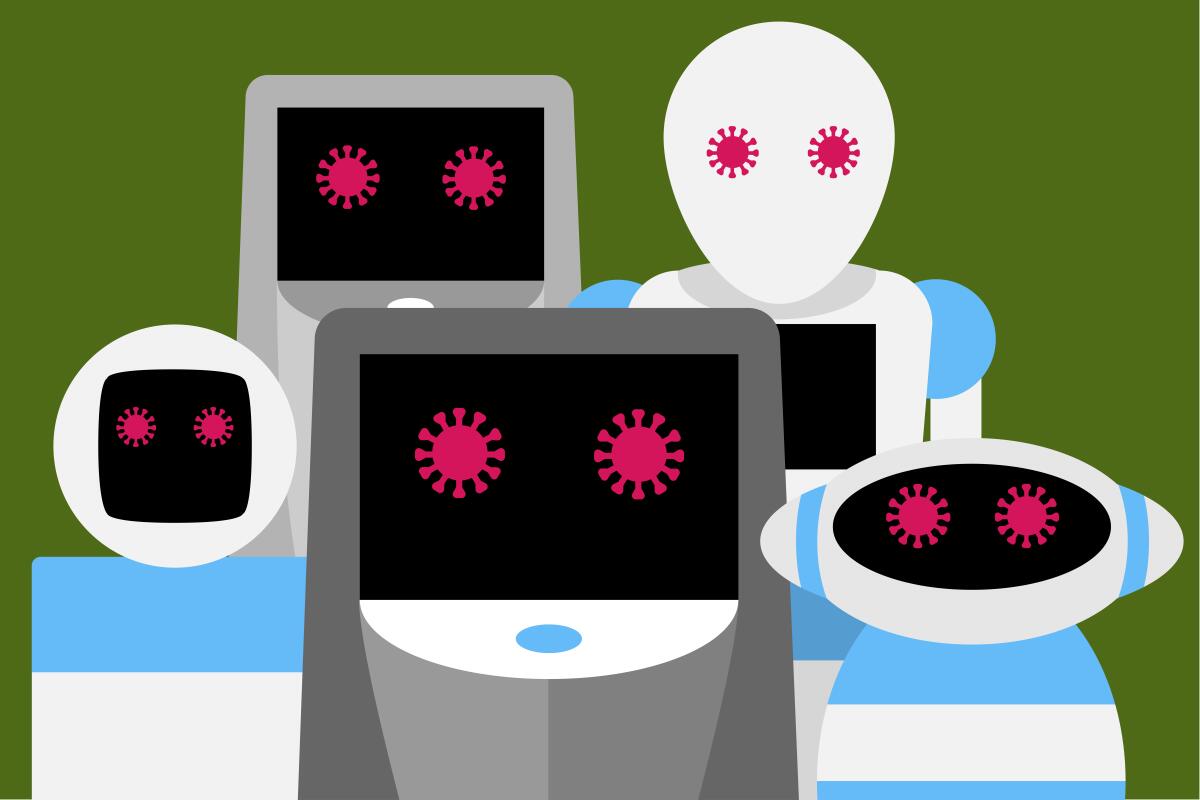Op-Ed: Where are the robotic overlords when we need them most?

- Share via
In 2016, I unpacked my luggage at a newly constructed New York hotel only to realize that I had forgotten my toothpaste. I called room service, and a chipper voice responded “Someone will bring it right up.” Two minutes later, I opened my door to discover an object resembling a trash can on wheels, equipped with a lid, a large button and a small digital screen. I gingerly pushed the button and the lid opened, revealing a toothpaste tube. The digital display flashed “Thank you.” The robotic visitor then turned around and rolled away. Before it disappeared, I snapped a photo, sending it to a friend. He responded, “Nice gimmick.”
Four and a half years later, when my family checked into a Laguna Beach hotel, COVID-19 safety protocols meant the human room service attendants couldn’t enter when we were inside. Under these circumstances, a robotic service provider would hardly be a gimmick. Unfortunately, the robots are nowhere to be found.
But market-ready robotic technologies exist, and they have the potential to mitigate the damage of the pandemic. Why don’t we finally welcome the long-promised robotic takeover?
Despite massive progress in artificial intelligence technology and increased adoption of industrial robots, consumer-facing robotic products are not nearly as ubiquitous as popular culture predicted decades ago.
The self-lacing sneakers from “Back to the Future” are not yet commonplace enough to save my daughter from tying her own shoes. The flying cars from “Blade Runner” still aren’t clogging Los Angeles’ skies. The only Robocop in Detroit is an unfinished bronze statue.
The reasons behind this are objective: Robotics innovation is technically challenging, the capital costs of starting a robotics company are high, customization is complex, deployment is costly and safety regulation is onerous.
Visceral aversion also plays a role in the slow adoption of consumer-facing robots. In contrast to AI software running silently in the background, a robot is a physical object invading your personal comfort zone and raising primal alarm bells. This sentiment is echoed by the viral response to the Boston Dynamics product demos of eerily dog-like robots, which were received online as harbingers of the looming robot apocalypse. While we feel comfortable handing over our most private data to AI engines on a near-constant basis, the most sophisticated robot most people will welcome into their homes is a Roomba.
Finally, consumer-facing robots threaten to replace manual and service jobs, raising fears of mass unemployment. This concern — an understandable one, considering the current 10.2% unemployment rate — could make regulation stricter and suppress investment appetite.
But the unemployment argument against robotics is Luddite in nature — history teaches us that it rarely wins. From the original Luddite movement in 19th century England, when workers rallied against textile machinery, to the Soviet Union’s early denouncement of genetics and cybernetics, we see that efficient technology usually ends up being implemented. Labor markets adapt in response. In the long term, automation creates new employment opportunities by reducing product prices and creating new industries.
When human contact is risky, the argument for public-facing robots is straightforward. An autonomous, self-disinfecting vehicle can transport frontline workers when mass transit is unsafe. Home base units with robotic capabilities can expand the functionality of telemedicine, transforming it from a glorified Zoom chat to a platform for remote delivery of therapeutics or diagnostics. Robotic assistants at hospitals and nursing homes can reduce the risk of exposure in environments that have seen more than 40% of all COVID-19 fatalities. Companies such as Waymo and UVD are already exploring some of these ideas. Many can be readily implemented using existing technology.
And it’s not too late for robots to make an impact. Early forecasts predicted that the virus would disappear within a few months. Multiple experts today predict we will have to coexist with the coronavirus for years to come. Besides, antibiotic-resistant bacterial outbreaks, environmental disasters and new pandemics are likely to emerge in the future. At a time where most of the tools to fight the outbreak are decidedly low-tech, robotic solutions to address future disruptions deserve a second look. The same robotic tools would bring further benefits to the post-pandemic economy, improving public safety in a variety of sectors and generating a boost in productivity.
What can be done to hasten the consumer- facing robotic revolution? Targeted federal funding with a focus on civilian applications is a good start. While the Department of Defense’s investment in AI technologies amounts to $2 billion, the nonmilitary National Robotics Initiative budget is a comparatively minuscule $50 million. Streamlined regulation is another key to this process, addressing public concerns about robotic safety and broader impact on the job market without hampering innovation. Finally, workforce retraining is key. If we focus on workforce development and prioritize applications that offer broad societal benefits, our robotic overlords may end up being benevolent after all.
Michael Shpigelmacher is a robotics and artificial intelligence expert and the chief executive of Bionaut Labs.
More to Read
A cure for the common opinion
Get thought-provoking perspectives with our weekly newsletter.
You may occasionally receive promotional content from the Los Angeles Times.










